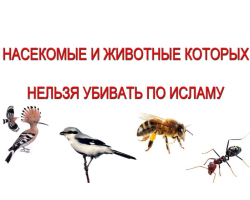Experienced gardeners have probably already encountered this problem more than once - a non -infectious disease of bone trees called gum or homosexual. If amber -colored trinkets appeared on the trunks, this is a gum.
Content
It would seem, what harm can such small and even beautiful hardened “snails” can do a tree? It turns out they can, and what! If the tree is not treated from them, then it can seriously get sick or even die.
Kostochkovy gum: reasons
- Comedy has a consistency of a dense amber-yellow adhesive substance. If the bark on the trunks or skeletal branches is damaged mechanically, or for some other reason appeared on it deep cracks, which affected the cambium, then such neces appear from them.
- BUT mushroom and bacterial organisms that can lead to moniliosis, gear, bacterial burn or cancer of bone trees, gum is further enhanced. By the way, not everyone knows about it, but even the fruits can exude a gum - so the trees try to cure themselves. But, however, they do not always succeed.
- If the soil in which the tree grows is too acidic, heavy or swimming clay, gum of gum can happen more likely than that of his fellow who lives on blessed chernozem. High humidity, unbalanced top dressing, or when the bay is incompatible with the supply, can also lead to the disease.


Humanizing prevention
It is best not to wait for gum for cherries, plums or apricot, and take preventive measures. If you know for what reasons gumming is excited, you can worry in advance about its prevention.
- Do not inflict injuries. The tree requires careful handling. If an old dead bark has appeared on it, do not clean it with excessive zeal, as it protects living fabrics lying under it. And unexpected bark does not tolerate cold winters.
- Plant the garden with district varieties. The thermophilic cultures have a special intolerance to strong cold, burning sun and excessive humidity, because of which the tree begins to Pereut. From their negative impact in the bark, damage may appear from which amber cellaces appear. In the Middle Volga, amateur gardeners are attempts to grow trees of cherries and apricot in the Middle Volga. But the first harsh winter or spring frosts will not give a chance to survive the southern seedlings. Therefore, it is better to plant your garden only with zoned varieties, which even our unpredictable climate will not hurt.
- Provide the protection of the trunks. Frosts and sunburn are caused by wounds of the bark, from which a gum can subsequently flow. Bonnial gardeners are whitened by trunks three times a year - in the fall, in winter and in the summer. However, not everyone can get out of the city in winter to whitewash trees, and for this reason, the trunks are wrapped in a comfortable wintering of trees with a burlap, non -woven material or spruce. This can become not only a preventive measure of the appearance of gum, but hares with mice will not be able to enjoy the stem bark. The main thing is in the spring to free the trunks from the bandages in time, and until the gum began, to treat damaged areas.
- Do timely and correct pruning. Excessive and untimely pruning can also cause homosexual. If the tree was covered with unnecessary shoots, then it is better to get rid of them in the summer, while they are still green, not yet old - then the wounds will quickly heal and cause hommosis.
- Feed and water in time. If the soil is unnecessarily acidic, it needs to be limited. And if it was introduced excessively many potassium and magnesium fertilizers that neutralize calcium, then it will necessarily be filled. This is done simply: the Earth is well spilled with clean water, and during the season it is watered with a weak potassium mortar. A solution of calcium chloride (10 l of water 10 ml of calcium) will also help your trees: each of them needs to be poured with ten buckets.
- Engage in furrow. The furrow of the trunks and skeletal branches should be done in the spring, as soon as sap flow begins. The barrel is cut with a sharp garden knife, without damaging living wood, ringing it every 15-18 cm. Skeletal branches are cut with vertically parallel lines, retreating every 8 cm. Such manipulations are carried out after 1-2 years, when the previous furrows appear Expansion is greater than 4 ml.
- French gardeners 3-4 times a year (two of them in winter) are engaged in spraying bone trees with iron sulfate: 3% solution in winter; 1% - in the spring. Since iron sulfate is simultaneously a fungicide, insecticide and micro -complement, the pathogens that activate gum are destroyed with its help, immunity increases and wood is fed with iron.

Commenting: What to do?
- Healing of gum wounds should be done in the spring, after the end of sapotage plants. With the help of a garden knife, the wounds must be cleaned, while capturing a healthy fabric (4-5 mm, no more). After surgery, they need to be disinfected - for this, copper sulfate (1% solution) is best suited for this, and then take a garden var and soak everything well for them.
- Some gardeners use fresh sorrel leaves as disinfection-they rub their wounds 2-3 times (in the intervals you need to wait until the juice dries), and at the end they “sealed” them with garden putty.
Useful article on the site:
- Pruning of fruit trees
- How to water a tree, bush, plant so that it dries
- How to grow a bone apricot tree properly
- What is the life expectancy of trees
- How many years does a birch tree live depending on the species and climate







